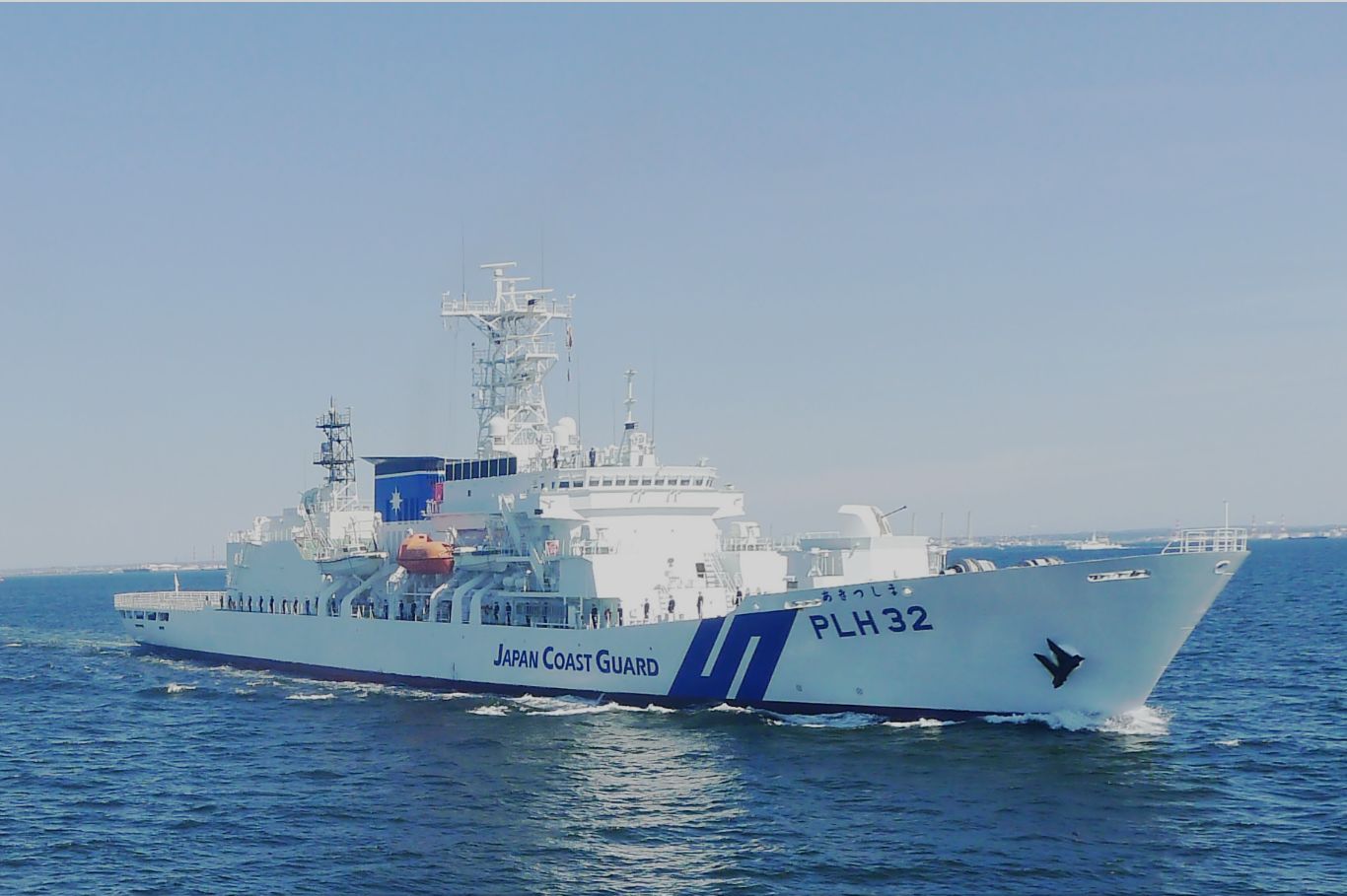The Japanese Coast Guard (JCG) is considering building its largest multipurpose patrol vessel, which would significantly enhance its operational capabilities.
The proposed vessel, set to surpass the size of any current JCG ship, will be capable of carrying dozens of high-speed rubber boats and three helicopters, according to sources within the Coast Guard.
The Japanese media said the new vessel will be designed not just as a patrol ship but as a comprehensive maritime base. It will be capable of commanding other patrol ships and serving multiple operational roles.
Officials are particularly interested in using it for operations around the contested Senkaku Islands in the East China Sea. The vessel will also be invaluable for emergency evacuations and disaster-response missions.
The initiative reflects a strategic response to scenarios that require rapid deployment and coordination. The inclusion of the rubber boats will specifically enable the Coast Guard to respond effectively if faced with a larger number of ships during missions.
In fiscal 2023, the Coast Guard allocated tens of millions of yen (equivalent to hundreds of thousands of dollars) to commission a private firm to study the vessel’s basic structure. The firm presented its findings in March, paving the way for a detailed blueprint.

Current plans outline a vessel with a gross tonnage three to four times greater than the JCG’s largest existing patrol vessel. The new ship will be approximately 200 meters long and have a gross tonnage of 30,000 tons. Additionally, the vessel may be designed to accommodate up to 1,500 passengers and various containers, enhancing its versatility.
The JCG plans to include the construction costs in its budget request for fiscal 2025 and aims for the vessel to be operational by fiscal 2029. It also plans to build a second ship in the future.
However, the ambitious project has sparked debate within the Coast Guard. Concerns have been raised about the JCG’s chronic labor shortage and whether such a vessel can be fully utilized.
Further, there are apprehensions about potentially provoking China, given the strategic importance of the Senkaku Islands.
Despite these concerns, the vessel is seen as a critical enhancement of Japan’s maritime capabilities. Originally focused on maintaining order and safety in domestic waters, the JCG has increasingly taken on international duties, fostering external relationships and contributing to capacity building in neighboring states.
The Vessel Will Be Crucial To Counter China
The Japanese Coast Guard’s plan to construct its largest patrol vessel will enhance its ability to address the frequent incursions of Chinese vessels into Japanese territorial waters around the disputed islands, known as the Senkaku in Japan and the Diaoyu in China.
The Senkaku Islands have long been a flashpoint between Japan and China, with both nations frequently facing off over the uninhabited islands.
On June 7, for instance, Japan protested to Beijing after four armed Chinese coastguard vessels entered waters that Tokyo claims as its territory. It was the first instance of four Chinese ships, seemingly equipped with cannons, entering Japan’s territorial waters near the disputed islands.
Japanese government sources suggest that any potential Chinese attempt to invade the islands would possibly involve a landing force using multiple small vessels. In such a scenario, the new multipurpose patrol vessel will be fully capable of dispatching smaller ships to counter these threats effectively.
A government source emphasized the strategic importance of this enhanced capability, stating, “If the enemy is aware of how difficult it would be to make land, it increases the power of deterrence.”

The vessel will be equipped with ample food and supplies, enabling it to function as a “floating base”, further strengthening its deterrent and operational capacities.
Beyond its primary defense role, the JCG plans to utilize the vessel’s extensive transport capabilities for disaster relief and evacuation operations. This includes potential deployment to evacuate residents from the Sakishima Islands and other areas near Taiwan in the event of an armed conflict involving China.
In 2023, the Japanese government adopted new guidelines to improve coordination between the Self-Defense Forces and the JCG during contingencies.
These guidelines outline the JCG’s responsibilities, including resident evacuation and search and rescue operations at sea, ensuring a comprehensive and integrated response to security threats and humanitarian crises.
- Contact the author(s) at ashishmichel(at)gmail.com
- Follow EurAsian Times on Google News




